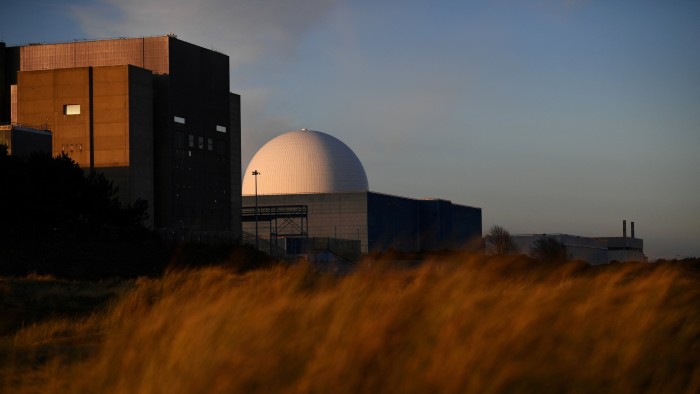Unlock the Editor’s Digest for free
Roula Khalaf, Editor of the FT, selects her favourite stories in this weekly newsletter.
Technologies to generate green electricity follow one of two trajectories. Some get cheaper, such as solar panels, which are small, modular and factory produced. Others, like nuclear plants, tend instead to be plagued with overruns and delays. Nonetheless, the UK’s decision to press ahead with a new nuclear project, Sizewell C, still makes sense.
Much has been made of the project’s potential cost. Hinkley Point C, its precursor, has a dismal record. It will now be ready at the end of the decade, and cost about £46bn to build.
Even if contractors learn from their mistakes and Sizewell C only requires about £40bn, that would put the cost of electricity it produces over its lifespan somewhere between £170 and £186 per megawatt hour, according to ICIS, a data and analytics company. That looks like a lot. Last September, the UK got developers to bid to build offshore wind power by offering them £89/MWh in 2025 money.
Yet the cost of nuclear power doesn’t necessarily reflect its value. It can be built relatively close to where the electricity will be consumed and, once up and running, produces almost all the time. That saves money on grids, batteries and other power storage devices that are necessary to turn offshore, intermittent wind into reliable electricity.
Aurora Energy, a consultancy, models a “high nuclear” UK net zero energy system, which includes Sizewell C plus a number of additional projects. It concludes that, should the UK be able to reduce the cost of nuclear power to that achieved in Finland, having a lot of nuclear power would be cheaper than relying mostly on renewables.
There are some other real but hard to quantify benefits of having nuclear in the mix. While optimised energy models spit out the lowest cost combination of power generation technologies, it is generally a bad idea to put too many eggs in a single basket.
All that suggests that the UK shouldn’t be faulted for its decision to press the button on Sizewell C. If anything, it should have been more forthcoming on the size and timing of its overall nuclear ambition. A cookie-cutter plant construction programme is the best way of bringing down costs.
As things stand, Sizewell C will still be among the world’s most expensive nuclear projects. And, to get it done, the UK government has had to step in directly and offer investors a guaranteed return on the money they spend. That shunts some of the risk of cost overruns to the consumer, in the form of higher electricity bills. None of this is ideal. But it is still better than letting the UK’s nuclear ambitions decay further.
